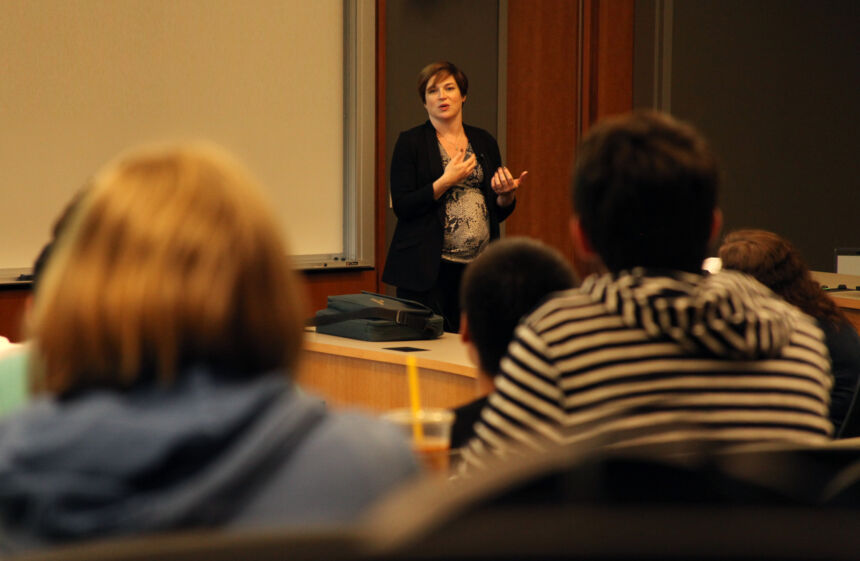October 07, 2014
State Department official visits SIA class to explain how social media is changing diplomacy

“If you join the foreign-service, it’s not just your job to go to another country and talk to their government, but it’s also to talk and engage with their people,” said Moira Whelan, deputy assistant secretary for digital strategy with the U.S. State Department. “The State Department has reached out to this large audience for decades, but today using social media is essential to be able to talk to the people of that country.”
Whelan spoke about “Digital Diplomacy” to the students in Professor Dennis Jett’s School of International Affairs class, Foundations of Diplomacy and International Relations Theory on October 6th.
She explained how the State Department uses social media and the Internet to broaden the U.S. public diplomacy mission. It starts with a daily press briefing, the transcript and video of which is posted daily on the State Department website. This is the only government office, other than the White House to have daily press briefings.
“This defines the transparency of the work we do, and helps us set a daily guidance for world issues,” she said. “Every piece of work we do touches a digital platform -- every meeting is transmitted digitally to enable a global conversation -- this is our challenge.”
Beyond the state.gov website, the State Department uses Twitter, Facebook, RSS feeds, and iTunes for podcasts. The State Department has been on social media since its first Twitter feed in 2006. Now, the government office has over 1 million Twitter followers, 800,000 Facebook likes, is looking to new social media sites, and is planning “a day in the life of an ambassador” video on Reddit with Ambassador Suzan LeVine. Whelan explained LeVine, the diplomatic representative for Switzerland and Liechtenstein, was chosen for the Reddit video because she was the first U.S. ambassador to take an oath of office using an e-reader.
LeVine and other ambassadors also tweet and use Facebook in their diplomacy. Whelan pointed out that social media is changing the way the U.S. engages foreign nationals, reaching out in a way that is both global and personal.
“Now ambassadors use social media and specific platforms to engage with specific populations in the country,” she said. “We try to use social media tools to engage in U.S. policy and also engage critics, instead of backing away.”
After her presentation, Whelan answered student questions on controversial topics ranging from the “Think Again, Turn Away” campaign, launched by the State Department in December, to dissuade on-the-fence jihadists from joining the fight against the West, to Edward Snowden.
“Social media continues our diplomacy practices, publicizing our daily press briefings, and continuing to make us the most advanced government in terms of transparency,” she said. We have over 1,000 tweets in a day from State Department platforms, and if one in a month causes a problem, those are pretty decent odds and we’ll take them.”
After the class, Whelan joined five of the students and Jett for dinner where she asked the students about their experiences and career aspirations and offered to stay in contact. They finished with dessert at Penn State’s Berkey Creamery.
“We begin the semester in 802 by defining diplomacy and discussing what it is and how it has changed because of technology,” said Jett, former U.S. ambassador to Mozambique and Peru. “The students’ first paper is on the impact of digital diplomacy on international relations. This was an opportunity to hear directly from the person at the State Department in charge of using social media and learning how the department uses that technology to get its message to the widest possible audience.”
